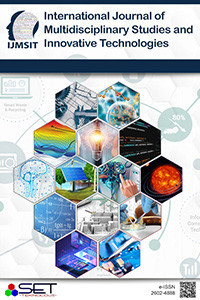Opportunities and Challenges to Educators When Transitioning to a TEL Environment – Case of Kuwait
Opportunities and Challenges to Educators When Transitioning to a TEL Environment – Case of Kuwait
Keywords – Technology-enhanced Learning, TEL, Kuwait Technology, Digital,
___
- [1] Columbia CTL. (n.d.). Active learning for your online classroom: five strategies using Zoom. https://ctl.columbia.edu/resources-and-technology/teaching-with-technology/teaching-online/active-learning/
- [2] Daniel, L., Visvizi, A., Gutiérrez-Braojos, C., & Lytras, M. D. (2018). Sustainable higher education and technology-enhanced learning (TEL) Sustainability, 2018(10), 3883-3905. doi:10.3390/su10113883.
- [3] Dunn, T. J., & Kennedy, M. (2019). Technology-enhanced learning in higher education: Motivations, engagement, and academic achievement. Computers & Education, 137,104-113. https://www.sciencedirect.com/science/article/abs/pii/S0360131519300831
- [4] Flavin, M., & Quintero, V. (2018). UK higher education institutions’ technology-enhanced learning strategies from the perspective of disruptive innovation. Research in Learning Technology, 26, 1-12. https://dx.doi.org/10.25304/rlt.v26.1987.
- [5] Hadi, R., & Valenzuela, A. (2019). Good vibrations: Consumer responses to technology-mediated haptic feedback. Marketing Science Institute Working Paper Series 2019, Report No. 19-116. https://www.msi.org/wp-content/uploads/2020/06/MSI_Report_19-116-1.pdf
- [6] Howles, D. (2015). Design tips for flipping the virtual classroom. Learning Solutions. https://learningsolutionsmag.com/articles/1721/design-tips-for-flipping-the-virtual-classroom
- [7] Kuppusamy, P. (2019). Smart education using Internet of Things technology. In: Emerging Technologies and Applications in Data Processing and Management, 385-412. Hershey, PA: IGI Global. DOI: 10.4018/978-1-5225-8446-9.ch017
- [8] Loveridge, S. (2020). What is haptic feedback and how will it change the way we play? Games Radar. https://www.gamesradar.com/haptic-feedback-explained/
- [9] Scanlon, E., & Conole, G. (2018). Interdisciplinarity in technology-enhanced learning: An interview study. Journal of Interactive Media in Education, 2018(1), 11-19. http://oro.open.ac.uk/57252/1/ES%20JIME%202018.pdf
- [10] Software Testing Help. (2020). 18 most popular IoT devices in 2020 (only noteworthy IoT products). https://www.softwaretestinghelp.com/iot-devices/
- [11] TEAME. (n.d.). Benefits of e-assessment. http://www.teame.ie/benefits-of-e-assessment/#:~:text=E-assessment%20is%20a%20valuable%20tool%20in%20Higher%20Education,many%20advantages%20over%20traditional%20pen%20and%20paper%20exams.
- [12] Thanaraj, A., & Williams, S. (2016). Supporting the adoption of technology-enhanced learning by academics at universities. Journal of Teaching and Learning with Technology, 5(1), 59-86. doi: 10.14434/jotlt.v5n1.18985
- [13] Zenios, M. (n.d.). Educational theory in technology enhanced learning (TEL) revisited: A model for simulation-based learning in higher education. British Journal of Educational Studies. https://www.researchgate.net/profile/Maria_Zenios/publication/342170201_Title_Educational_theory_in_technology_enhanced_learning_TEL_revisited_a_model_for_simulation-based_learning_in_higher_education/links/5ef46c8a92851c35353fca9.
- ISSN: 2602-4888
- Yayın Aralığı: Yılda 2 Sayı
- Başlangıç: 2017
- Yayıncı: SET Teknoloji
A Serious Game Application For The Detection Of Explosives
Selim BUYRUKOĞLU, Yıldıran YILMAZ
Büşra Nur YETKİN, N. Fırat ÖZKAN, Merve SERT, Gülce YÜCEL
N. Fırat ÖZKAN, Emre AKSOY, Gökberk ŞENSOY
Behnam ALİZADEHASHRAFİ, Mohammad DARKAHİ GHAREH BAGH, Soraya ATA, İsmail Rakıp KARAŞ
Yalova İçin Binalarda Yalıtım Kalınlığının Simülasyonla Değerlendirilmesi
Hüseyin Can ÜLGÜNER, Adil DEĞİRMENCİ, Ahmet ÜSTÜNTÜRK, Alper KELEŞOĞLU, Ümit ÜNVER
An Essay on the defining Design Process as a Philosophical and Conceptual Term
Asiye Nisa KARTAL, Hasan Basri KARTAL
Keivan BASİRİ, Ehsan AMİRİ, Zahra GHASEMİ, Saeed AMİRİ
